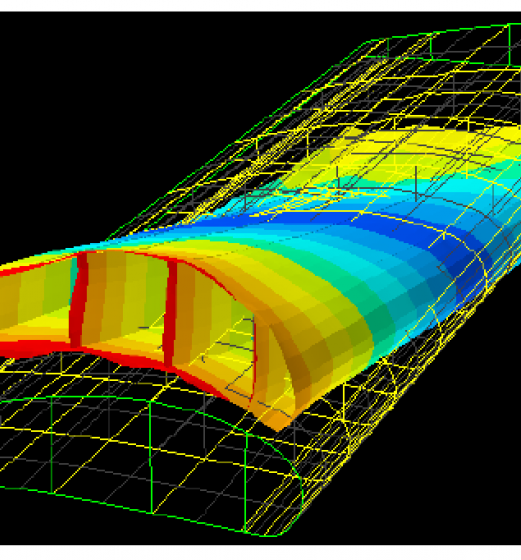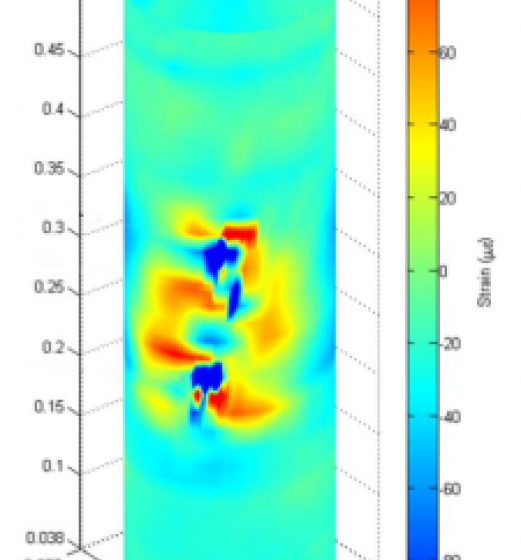Sensing and Non-Destructive Testing
Lightweighting and Advanced Materials
Overview
Lightweighting is a major trend in many industries and especially in the automotive and aerospace industries. Lightweighting involves new designs and the adoption of lighter, advanced materials such as advanced composites. The design, manufacturing, certification and maintenance of these new materials and structures introduces many new measurement requirements and challenges, which fiber optic sensors are uniquely suited to address.
FEM/FEA Model Validation
Finite element modeling and finite element analysis (FEM/FEA) is widely used in the design of structural components and systems. Since FEA models include assumptions and simplifications, access to experimental data is critical to verify and adjust the model to assure a higher level of accuracy.

Improving Material Bonding and Joining Quality
The trend towards lightweighting and increased usage of composite materials presents new challenges in material bonding and joining technologies. Traditional joining methods, such as riveting and screwing, introduce damage to the composite structure and generally are not preferred. Therefore, joining methods such as bonding with adhesives and welding that doesn’t damage the laminate are being refined and becoming popular.

Embedded Sensors for Smart Parts
Fiber optic sensors are ideal for creating “Smart Parts,” components with embedded sensors able to detect and report the physical state of the material and component. Embedded strain sensors have been shown to be very effective in detecting and locating material structural damage, which is often not visible with composite materials.
